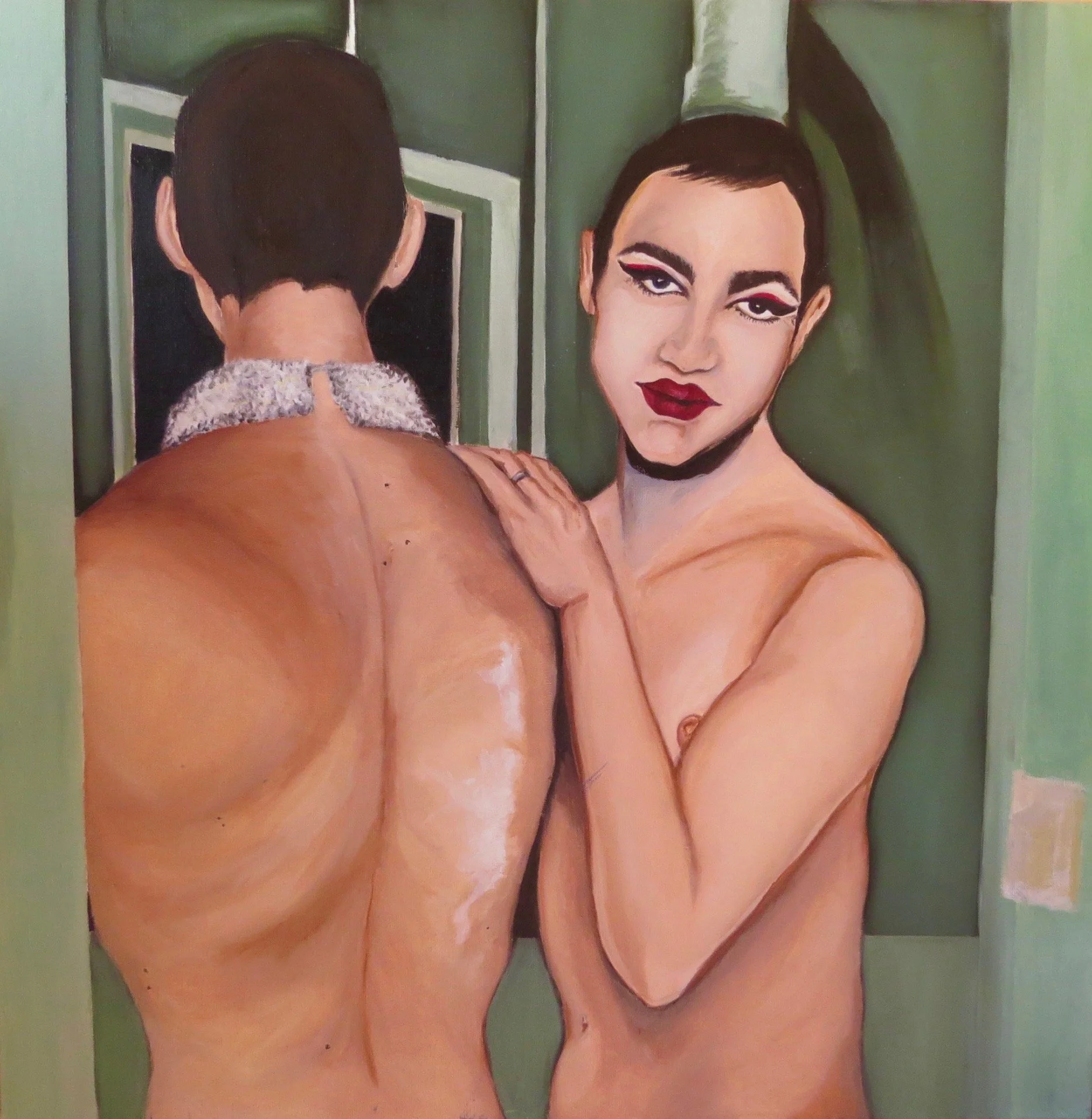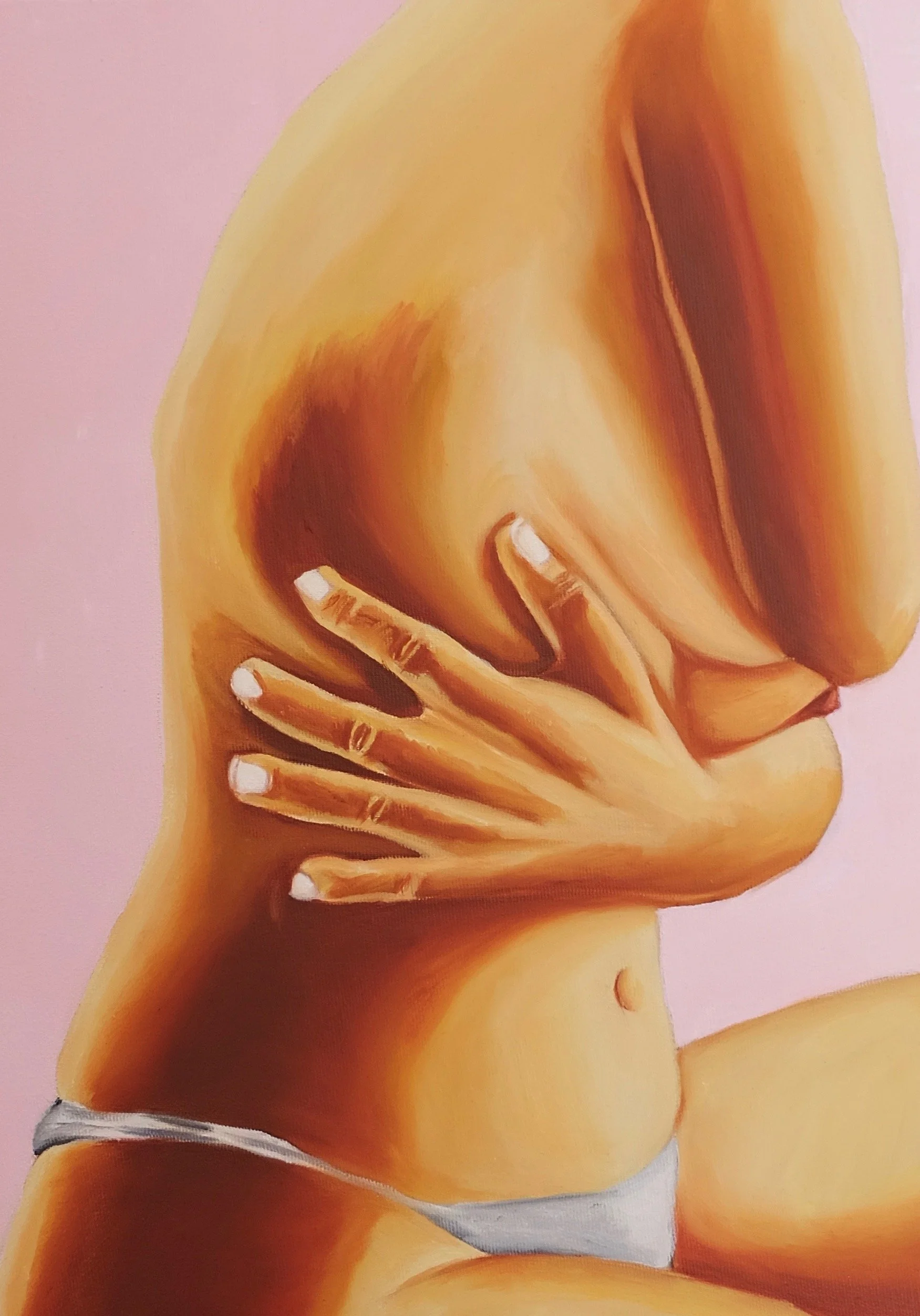The story that led Noura Djuric to painting is one of displacement. Books are first and foremost her way of approaching her encounter with images, particularly medical iconography, but also stories and biographies of painters and writers. Her work focuses on representations of the body as the vector of our actions and the seat of our sensations. Pain and pleasure run through it and alternate within it. It is political. It is the body that resists and moves in physical and geographical space. It is an image, a reflection of our transformations and our identities: the love we feel for each other or would like to feel for each other. It is this instability, in all its sensitivity and tenderness, that the artist wants to capture. She places the body at the centre of her compositions, at their very heart. It is their ‘Takotsubo’* or broken heart syndrome that the artist seeks to portray in her incredible variations. Its vulnerability and power as an imperious territory of emotions and a magnificent living mechanism. The body and trauma, the body and loneliness, the body and illness, the body and depression. How does the body remember?
Her approach, which combines drawing and oil painting, focuses as much on classical history and representations of women as on personal experience and social codes through the motif of the garment and the colors used. What interests the artist is what the body signifies and what it contains. What it tells and what it holds, how talkative and silent it is. References to Francis Bacon and Otto Dix rub shoulders with Nan Goldin's documentary photography, Michel Pastoureau's philosophical interrogations of colorimetry, or the corset, stripes and harlequin and their function of marginalization. These elements make painting speak through sociological vectors of gender, geography and culture.
Noura Djurić's painting is organic, seeking to dilute boundaries. It is also all-encompassing, because it aims to speak of a total experience, both human and psychological, which blends the historical archive, the personal narrative, female gaze and science. It is resilient because of its great differences in size. She wants to share her own subjects, such as identity, intimacy, the psychic and psychosomatic world, on the same very large formats that are usually used to deal with subjects of war, great history and men. She wants to turn the heart and the emotions into monumental subjects. Or, on the contrary, she wishes to force attention and hides herself on much smaller canvases, so that we finally find her in a hide-and- seek, so that we decide to cherish her warlike strength, paved with whispers.
Elisa Rigoulet, july 2024






